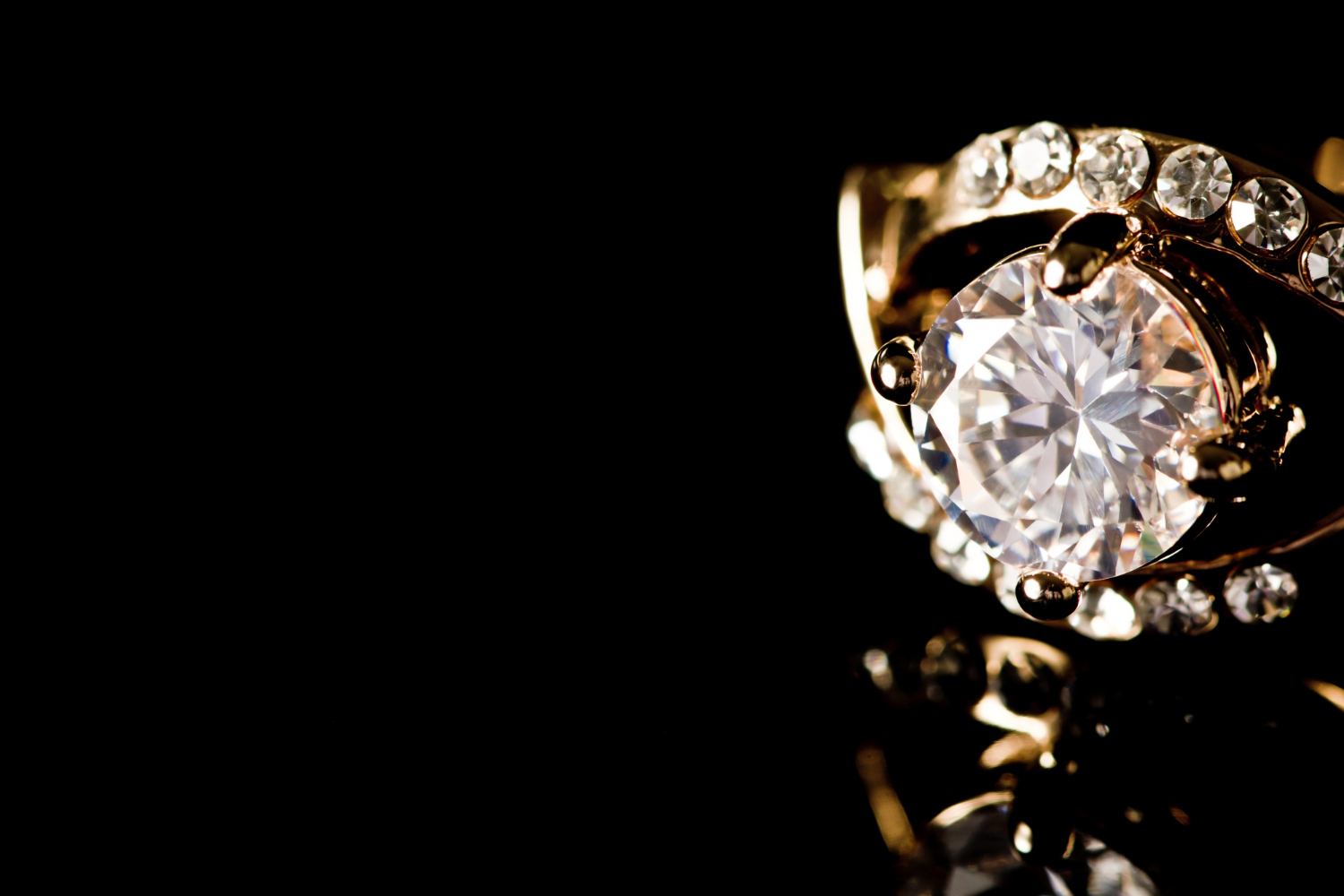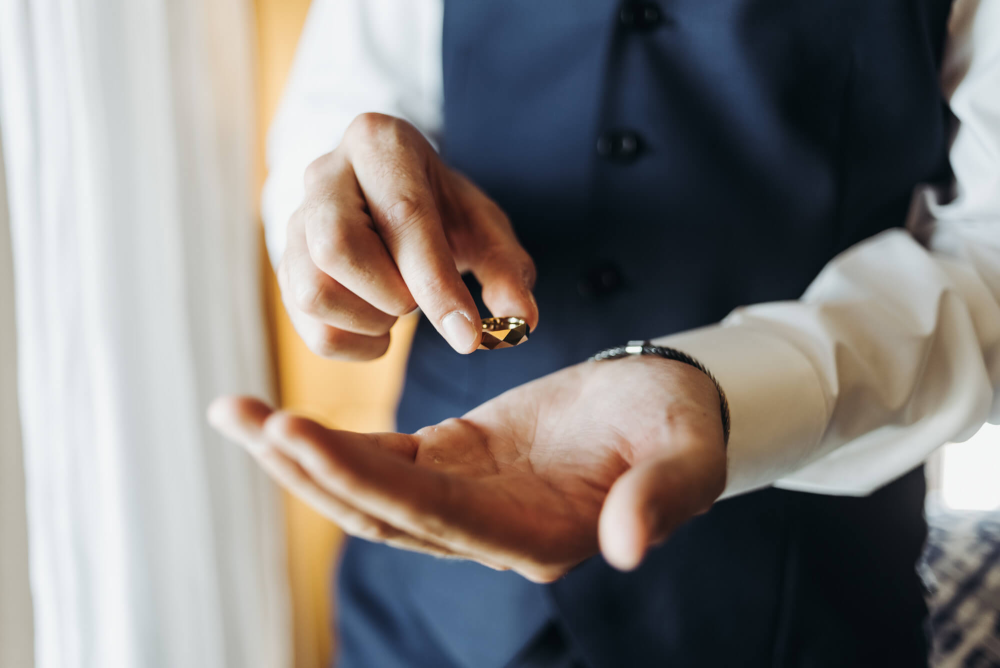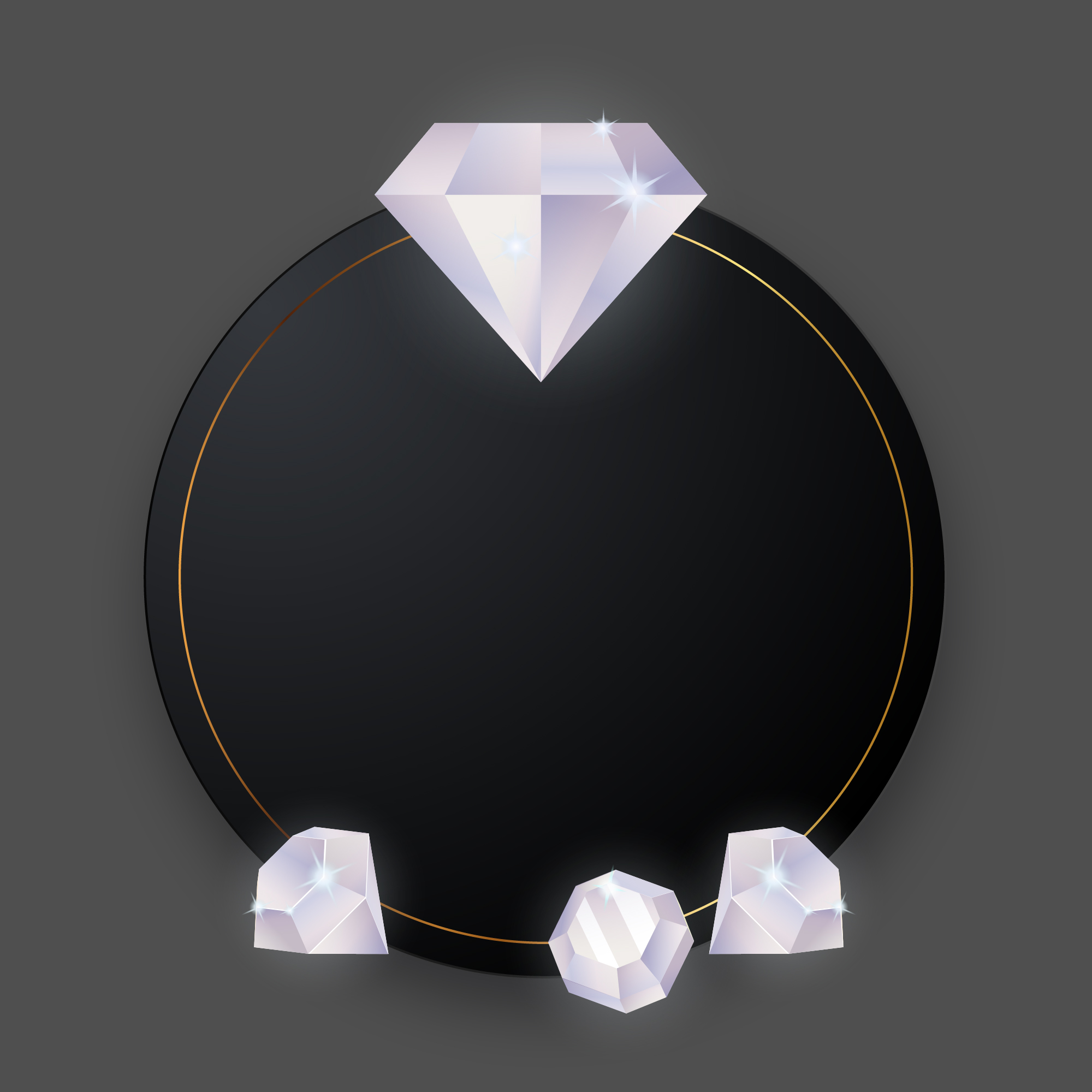BLUE DIAMOND
Introduction
Welcome to the fascinating world of blue diamonds, where elegance, rarity, and luxury meet. In this article, we will discuss informative topics about the blue diamonds and all of their corners. We will dive deep into what makes them famous for celebrities, high-value people, and royalties. We will discuss all of their types and differences from each other, their cultural significance in traditional and modern applications, and their quality grading based on their looks and desirability
Moreover, we will compare natural blue diamonds to synthetic or lab-grown and treated blue diamonds, differentiate their capabilities, and find applicable settings for each one of them. We will also outline their investment potential and their future in the market, study their origins and why they are significant in our history and future, and learn about how institutes and laboratories grade them and what needs to be checked before purchasing this ultimately rare piece of treasure.
Now, let us begin embarking on the journey by asking the question, what is a blue diamond?
What is a Blue Diamond?
A blue diamond is a diamond with a blue color; it can be naturally mined, synthetically produced, or even treated. The color blue in a blue diamond comes from the element boron atoms; these boron atoms absorb yellow light and emit the blue color on these diamonds. These blue diamonds are considered extremely rare and are highly valued by collectors, investors, enthusiasts, and even high-value people such as celebrities and royalties.
Combined with their stunning color, mesmerizing beauty, and extreme rarity, blue diamonds are among the most highly sought-after pieces of jewelry. Some of the most famous blue diamonds ever encountered by mankind are the Hope Diamond, the Blue Moon Diamond, the Baby Hope Diamond, the Wittelsbach-Graff Diamond, and the Tereschenko Diamond.

Explore all types of blue diamonds
There are nine color types of blue diamonds available in the whole world. These color types are graded by the Gemological Institute of America (GIA) based on the intensity of their hue, the saturation of the color, and the lightness or depth of their tone. Their captivating hues range from the faintest of blue up to deep, intense shades. Excluding all non-fancy grades, we will dive deeper into the fancy grade of the blue diamond; here are their definitions.

Fancy Light Blue
The first fancy color type of blue diamond, fancy light blue exhibits a subtle blue tone that is clearer than the first three non-fancy blue tones. It balances the color blue without being understated or too noticeable, making it perfect for jewelry styles that do not overpower the design.

Fancy Blue
The fancy blue diamond grade displays a more pronounced blue color than the fancy light blue grade; they are more vibrant and eye-catching due to their richness in color, making them perfect for centerpieces in statement jewelry. This grade is the most famous blue grade due to its bold allure and reasonable price, making it the most famous blue stone on this list.

Fancy Intense Blue
Compared to the fancy blue grade, fancy intense blue has a more intensely vivid blue color. It is much rarer, and its blueness strikes more vibrantly. This color grade is often associated with elegance due to its striking sparkle. It also tends to draw much attention and desire, making this grade classically significant and valuable.

Fancy Deep Blue
The fancy deep blue grade is a marvelous piece of diamond the Earth has ever produced. It is the darkest and deepest shade of blue available, and it is among the rarest pieces of jewelry. It has a more pronounced deep blue color than the fancy, intense blue. The most famous piece of this grade is the “Hope Diamond,” which is graded as a Fancy Dark Greyish Blue.

Fancy Vivid Blue
The rarest, most saturated, highly coveted, and most valuable of all the blue grades, fancy vivid blue is the most celebrated blue-colored diamond in the world. As blue as the ocean, fancy vivid blue displays a hue that can be directly associated with the sky. The most famous fancy vivid blue grade diamond is the “Oppenheimer Blue Diamond.”
Cultural Significance: Blue Diamonds in Traditional and Modern Jewelry
Blue diamonds are embraced by some of the most significant cultures all over the world due to their extreme rarity, unparalleled beauty, and enchanting allure. The prominent symbolism of blue diamonds in cultural society lies beneath their beauty and striking appearance; they are often associated with wealth, power, fame, luxury, and elegance. Due to their mesmerizing existence, they have significant importance in traditional and modern jewelry, offering their natural beauty and uniqueness in jewelry.
In traditional jewelry applications, blue diamonds are often worn by high-value people, such as aristocrats and royalties. They are used as a centerpiece for crowns, necklaces, scepters and many more. Due to its mesmerizing beauty, the blue diamond is often believed to have a magical power, making it important when connecting with the divine. On the other hand, in contemporary use, the blue diamond plays an integral part in creating a statement for celebrities and high-value people; they are also seen in high-profile events such as awards nights, fashion shows, and red-carpet events.
Quality and grading of blue diamonds
While blue diamonds are considered one of the rarest colored diamonds ever to be found, they also share a similar quality and grading procedures with other colored diamonds such as red, green, violet, and others. Understanding how professionals grade these rare blue diamonds is the key to the understanding of the overall value of the diamond. To better appreciate this topic, we prepared some essential factors on what professional gemologists and scientists look for when grading blue diamonds.


Color
The most integral aspect of checking a blue diamond’s grade. The color of a blue diamond is assessed by checking the three primary elements of color: hue, saturation, and tone. Each of these aspects has its distinct grading and is determined by professionals.

Cut
Cut refers to the overall cut of a diamond. A diamond is often cut to increase its glow and brilliance and for the blue diamond to achieve its maximum intensity color. Some of the most popular cuts for the blue diamond are radiant, cushion, and emerald cut.

Clarity
A diamond's clarity refers to its overall inclusions and blemishes. While clarity is significant in colorless diamonds, it is less critical in colored diamonds, especially blue diamonds.

Carat Weight
Carat weight simply refers to a diamond’s whole weight after cutting. A larger blue diamond doesn’t always mean heavier, and vice versa.

Certification
A blue diamond's certificate is crucial when determining its authenticity and validity. Always obtain a certificate from the Gemological Institute of America (GIA) to ensure the quality and grade of a blue diamond.
Blue Diamond Cuts and Shapes
Blue diamonds can be cut and shaped into different sizes and styles to increase their overall appeal and create a lasting impression. Depending on the jewelry setting or personal request, a blue diamond can fit all types of jewelry to achieve maximum brilliance. Each cut and shape provide a unique characteristic that adds to the beauty of a blue diamond, allowing the diamond to fit a design and individual preference; here are some of the most notable cuts and shapes for the blue diamond.
Round Brilliant Cut
This cut is the most versatile among all diamond cuts and shapes. In blue diamonds, a round brilliant cut offers a distinctive appeal that complements the stone’s color and brilliance, making it applicable to any jewelry design.
Princess Cut
Famous for its rectangular or square brilliant-cut facets, this cut offers a contemporary look with an elegance that no other cut or shape can provide. Princess-cut blue diamonds are perfect for engagement rings and as centerpieces for pendants and necklaces, offering a modern twist on elegance.
Emerald Cut
When looking for a refined, timeless style, the emerald cut is the perfect choice. Known for its step-cut facets and rectangular shape, it emphasizes the beauty, color, and allure of blue diamonds, making it elegant in any jewelry setting and adding a sophisticated look to any attire.
Pear Shape
The pear shape, also known as the teardrop shape, offers the most feminine cut and shape available for a diamond. A blue diamond cut in a pear shape offers versatility while showcasing the vibrant blue color of the diamond.
Marquise Cut
A marquise cut is a long and narrow shape with pointy ends that resemble the front of a boat or a hull. This particular cut emphasizes the optimal color and display of a blue diamond, making the surface area of a diamond appear much more beautiful, creating an exquisite look.
Comparing Blue Diamonds to Colorless Diamonds
While both colorless and blue diamonds are stunningly beautiful and appreciated in both fashion and jewelry purposes, they have several differences from each other, not only in their color but also in terms of their usage and desirability. While they are both celebrated for their beauty and brilliance, each of them offers a distinct characteristic and appeal to an individual, making them admired by several collectors, fashion designers, enthusiasts, and many more.
Colorless diamonds are known for their timeless and classic appeal. They are valued for their lack of color and for allowing light to pass through them, making them brilliant. They are often used in engagement and wedding rings due to their symbolism, which is purity, eternity, and enduring love. Their popularity remains in higher demand due to the fact that they have long been standardized as used in romantic events such as wedding ceremonies.
On the other hand, blue diamonds are known for their extreme rarity and individuality. They have different shades that range from light blue up to fancy vivid blue, and they symbolize depth, tranquility, and spirituality. Blue diamonds are valued for their striking color; the deeper the shade of blue, the more valuable they are. Moreover, they are a better investment when compared to colorless diamonds; due to their rarity and high demand, their value in the market continues to rise.
Crafting Distinctive Jewelry Designs with blue diamonds
There are infinite ways jewelers, artisans, and designers craft distinctive jewelry based on the blue diamond; due to the beauty and enigmatic charisma it offers, the blue diamond provides endless possibilities when it comes to epic jewelry designs. From elegant rings to men’s watches, it all depends on the creativity and personal style of the wearer when crafting distinctive jewelry designs with blue diamonds. Here are some ideas on how to incorporate these fascinating blue diamonds in jewelry.

Blue Diamond Engagement Rings
Blue diamonds symbolize tranquility, hope, and eternal love. That is why a centerpiece blue diamond engagement ring offers an elegant and mesmerizing look with a twist of never-ending love. The blue diamond can be set in many different styles, from classic solitaire settings to contemporary designs; the blue diamond can fit in any jewelry setting; just always remember to set it as a jewelry centerpiece to promote its unmatched beauty and sparkle.

Necklaces and Pendants
Necklaces are known for their ability to attract attention and be striking focal points that draw attention to any outfit an individual chooses to wear. By being the center of attraction, incorporate the beauty of the blue diamond in a necklace by making it a centerpiece to add admiration and appreciation to its beauty. Create a blue diamond necklace by placing the gem into the center, surrounded by sparkling white or colorless diamonds to enhance the sparkle of the blue diamond.

Blue Diamond Watches
A blue diamond watch for men and women combines functionality with style and luxury, making them adorned by practical people who value time and elegance all at the same time. Little holes should be carved in the bezel of a watch to include the blue diamond in a watch accessory, then carefully designed with blue diamonds to accentuate the color and produce a dazzling display and effect for the wearer and jewelry. The bezel of the watch is often the centerpiece of the accessory, making it dazzle with blue diamonds that will surely catch the attention of any people who have a glimpse of it.

Investment
Naturally mined diamonds are well known for their investment potential due to their limited supply and increasing demand. After ensuring the red diamond’s 4Cs, jewelry settings, and certificate, any investor must also look after its investment potential. Two factors must be considered when discussing its investment capabilities: the long-term value and resale options.
What to Look For in a Blue Diamond Jewelry?
Finding the right blue diamond in the market for a specific budget and beauty can be tiresome, and it can take a lot of time to choose from the limited options due to their rarity and expense. Thankfully, we created a list of what to look for in blue diamond jewelry so that an individual will have the proper knowledge of what needs to be checked before buying blue diamond jewelry. This list includes all of the required information and a step-by-step procedure on what to look for in blue diamond jewelry.

Check for the 4C
When buying a diamond of any kind, always look out for its 4Cs, namely: Cut, Clarity, Carat Weight, and Color. These specifications determine the overall value of a diamond, in this case, the blue diamond. Its color is its main aspect; therefore, an individual needs to check the consistency and intensity of its color; the deeper and more profound the color, the higher the value.

Check for the setting quality
Blue diamond jewelry needs to accentuate the blue color of the diamond. The setting of the blue diamond in jewelry also needs to be checked for further analysis to ensure that it is sturdy, secure, and well-designed to enhance the blue diamond's beauty and color.

Check for its certificate
To ensure that blue diamond jewelry is authentic and legitimate, always purchase blue diamond jewelry from trustworthy jewelry stores and auction houses. They can provide a legitimate certificate from reputable institutes like the Gemological Institute of America (GIA), the International Gemological Institute (IGI), and the American Gemology Society (AGS). These reputable institutes provide an unbiased assessment of diamonds, especially scarce ones like the blue diamond.

Check for the budget and price
Lastly, always consider the budget when selecting blue diamonds. Always remember that a blue diamond’s value is determined by the 4cs, especially its color. The color of the blue diamond can vary from the lightest shades to the most pronounced vivid blue color; the more profound its color is, the higher its price in the market. Also, remember always to be skeptical when purchasing a natural blue diamond, for they are often fake or imitated, lowering their overall value and demand.
Investment Insights: Why Blue Diamonds Are Gaining Value in the Market
The saying “Diamonds are forever” is genuinely applicable to the diamond’s worth in the investment realm, as it is constantly in demand and gradually raising its value over time. Moreover, naturally mined blue diamonds are some of the highly sought-after pieces of jewelry that gradually increase in value yearly due to their prominent rarity and increase in demand in the market. Here are some of the significant factors as to why blue diamonds are gaining value in the market.
Rarity and Limited Supply
Blue diamonds are known for their extreme rarity and limited supply, making them an excellent opportunity to invest early to make more significant gains in the future. The leading cause of the limited supply of naturally mined blue diamonds is the low production of their mines in the African region and their probable closing. This event causes the naturally mined blue diamond’s supply to decrease exponentially, driving its price and value higher in years to come.
Growing Popularity and Demand
Celebrity appearances wearing these natural blue diamonds make its awareness to the public more noticeable and desirable, making its demand grow in recent years. Famous blue diamonds like The Hope Diamond, The Blue Empress, the Blue Moon of Josephine, the Copenhagen Blue Diamond, and many more unconsciously drive the price of every natural blue diamond in the market, making them popular in contemporary use and demand in modern fashion and jewelry rise in the past few years.
Historical Significance
The historical significance of the blue diamond in history and culture holds a special place in our past events, making them valuable and genuinely one-of-a-kind and celebrated by every person who adores the beauty of these remarkable gemstones. The Hope Diamond is one of the most famous naturally mined blue diamonds that hold significant history in our culture. The allure of these famous diamonds is what drives any blue diamond’s price unconsciously, making them an excellent investment.
Investment Potential
There are several potentials in the investment industry when it comes to naturally mined blue diamonds. Because it is considered a tangible asset, a naturally mined blue diamond is a portable asset that can be sold or traded in various places and times, and they are proven to withstand economic fluctuations and instability. Their potential is limitless, not to mention its decreasing supply and growing demand will surely take value in due time.
Diversification of Portfolio
Diversifying assets is one of the best techniques seasoned investors use with their investments. They scatter their entire investment into different assets and finance various kinds of interests that bring them returns on their investments. They do this to mitigate the risk involved when investing their hard-earned money, to be safe in times of market crashes and crises, and to have better control over their expenditures when it comes to investment. The naturally mined blue diamond is a great way to diversify one’s portfolio due to its ability to stay relative in the market and continuous
Red diamond certification
All of our gemstones, especially diamonds, have their specific certification issued by the GIA. We ensure that all of our diamonds are readily available, have been appropriately checked for accreditation, and are purchasable at any moment. Prioritizing our clients’ peace of mind is one of our commitments; making trustworthy deals is another, and we ensure that our clients’ experience when making any purchase will be of top-of-the-line quality.

Verifying Authenticity: A Guide to Checking Red Diamond Validity
Due to the scarcity of red diamonds, a potential buyer must take rigorous steps to ensure their authenticity and quality. Because it is astronomically valuable, it is often counterfeited and synthetically produced, so it is essential to thoroughly examine it to remove any doubt and uncertainty before buying this rare gemstone on the market. Luckily, we prepared a guide to help anyone purchasing a red diamond; here is the step-by-step guide.
Certificate
Before purchasing a red diamond, ensure it has a certificate from reputable institutes like the Gemological Institute of America. Moreover, secure the certificate is legitimately from them to avoid future troubles.
4Cs
After securing the certificate of the diamond is legitimate, an individual must check if the 4Cs of the diamond is directly indicated on its certificate. The 4Cs of a diamond include carat weight, clarity, cut, and color.
Subject to light
A natural red diamond typically exhibits little to no fluorescence when exposed to ultraviolet light (UV); a strong fluorescence can indicate that the diamond is treated or synthetically produced.
Consult with experts
Always seek professional and reputable experts before purchasing; find the best-experienced gemologist or diamond experts who can help and provide further guidance. And as a last tip, don’t fall into deals that are too good to be true; they are often counterfeited or synthetic.
Celebrity Style Spotlight: Blue Diamonds Making Waves on the Red Carpet
The demand for blue diamonds among celebrities and high-value individuals is continuing to grow due to their rarity, luxury, and unparalleled beauty. The allure of this particular diamond is being shown off at high-profile events such as the Academy Awards, Red-carpet Events, and many more. Here are some notable celebrities who embrace blue diamonds in their jewelry and how they make waves on the red-carpet scene.
Kate Winslet
A famous British Actress known for her role in the Avatar movie, Kate Winslet was seen in a striking blue diamond necklace at the Academy Awards. It perfectly complemented her elegant gown, adding glamour and luxury to her personal choice of jewelry and style.
Jennifer Lopez
Known for her bold style and unique fashion statements, Jennifer Lopez, also known as J. Lo, has been seen wearing blue diamond earrings and bracelets on various extravagant occasions such as the Grammy Awards, Met Galas, and recently in the Golden Globes Awards Night.
Beyonce
Her iconic voice and performances made her one of the most well-known artists all over the world. Beyonce has been seen wearing the elusive blue diamond jewelry on many occasions and events. She embraced its beauty by wearing it as a bracelet, statement necklace, and even cocktail rings, making her look outstanding with different artists.
Blue diamond certification
A certificate or documentation of a blue diamond is considered one of the most important papers to have when planning to purchase a blue diamond or even blue diamond jewelry. This certificate contains a detailed assessment of a diamond, its origin, its specific specifications, and crucial information about the blue diamond. Having a legitimate certificate for a blue diamond ensures the quality and validity of the gemstone, giving peace of mind to its future owners.
The Gemological Institute of America (GIA) is one of the most reputable institutes that conducts a thorough assessment of diamonds and other gemstones. After rigorously examining a diamond, they release a legitimate certificate that includes the critical details of a blue diamond, like its cut, clarity, total carat weight, color, origins, and many more intricate details about a particular diamond.
All of the diamonds that we sell in this company have their own GIA certificate. We ensure the validity and quality of each gemstone we sell, always provide a certificate from the best institute, and always be transparent about what we are selling to have our future and current clients’ trust and satisfaction.
Verifying Authenticity: A Guide to Checking Blue Diamond Validity
Verifying the authenticity and legitimacy of a blue diamond is essential because they are scarce and valuable. Professional gemologists, scientists, and jewelers can validate blue diamonds using proper equipment and advanced technologies to learn more about whether they are natural, synthetic, lab-made, or even treated. We created a step-by-step guide on how to check the authenticity of blue diamonds and we will begin tackling the topic about their certification.
Certificate
– When buying any type of diamond, always look for an authentic certificate or documentation issued by the most reputable institutes. Make sure that the documentation directly refers to the diamond by examining both the certificate and the diamond at the same time. These certificates usually provide a detailed analysis of any kind of diamond.
Examine using equipment
Nowadays, we can thoroughly examine a diamond using advanced technology and equipment. Examine the diamond using a loupe or a microscope and look for inclusions or imperfections labeled in the certificate to compare them rigorously and to ensure their validity.
Check for any inscriptions
The next step is to check the blue diamond for any inscriptions. Several certified diamonds have their own inscriptions, mainly in the widest part of the diamond or its girdle. These laser inscriptions should match what is written on the certificate. They are usually a certification number and can be verified with the laboratory that issued them.
Seller’s Background
Lastly, always check the seller’s background and history of sold gemstones. Check for their honest reviews and transparency by the use of the internet or other people’s reviews. The most reliable source of information about a seller’s background is the number of high-value customers and clients they have. These sellers and jewelry shops often spend enough money for their reputation, and they always keep up with their policies and standards.
Lab Grown vs. Mined Blue Diamonds
Because of the blue diamond’s extreme rarity and value, they are usually copied in laboratories and institutes creating synthetic blue diamonds. These two different kinds of blue diamonds have their similarities and differences. While they are similar in structure and color, they mainly differ in the most significant aspects, which determines their overall value and desirability. We created a table to differentiate their strengths and weaknesses from each other to have a better understanding of these two types of blue diamonds.
Aspect
Origins
Structure
Cost and Value
Environmental Impact
Investment Potential
Lab-Grown or Synthetic Blue Diamonds
Created in laboratories with a controlled environment mimicking the natural blue diamond.
Directly copied the natural formation of the natural blue diamond, extremely high heat and temperature, and boron impurities.
More affordable production costs leading to less value compared to the natural blue diamonds.
Lower environmental impact, fewer emissions, and no mining required.
Lower resale value and has a lower investment potential compared to naturally mined blue diamonds.
Naturally Mined Blue Diamonds
Formed naturally deep beneath the Earth’s mantle about billions of years ago.
Formed with carbon atoms that bond together, forming a crystalline structure with enough boron impurities.
More expensive production costs leading to higher value compared to the synthetic blue diamonds.
Higher environmental impact due to mining process.
Higher environmental impact due to mining process.
Quick Facts about blue diamonds
- Blue diamonds are considered to be extremely rare.
- They are the second rarest colored diamond behind the red-colored diamond.
- Their source of color is from boron impurities, which absorb yellow light, emitting a blue color.
- The Hope Diamond is considered to be the most famous blue diamond of all time.
- Blue diamonds mainly symbolize eternal love, loyalty, and honor.
- Naturally mined blue diamonds are suitable investments due to their rarity, scarcity, and high demand.
FAQs
How much are blue diamonds worth?
Blue diamonds are typically worth starting at around $100,000 per carat weight.
What are blue diamonds called?
Blue diamonds have different names; they are often called sky, sea, baby, and midnight diamonds.
How rare are blue diamonds?
They are extremely rare and very hard to find.
Where do blue diamonds come from?
Blue diamonds come from the mines of countries such as Australia and South Africa.
How are blue diamonds formed?
They are formed the same as any diamond; their only difference is that they have boron impurities, which absorb yellow light, emitting a blue color.
What do blue diamonds symbolize?
Blue diamonds mainly symbolize eternal love, trust, and loyalty.Blue diamonds mainly symbolize eternal love, trust, and loyalty.
Final Verdict
In conclusion, the blue diamond continues to marvel at the world of luxury gemstones due to its exclusive rarity and appeal. They hold a special place in our culture and are one of the most highly regarded colored diamonds in the world. The beauty and importance of this diamond transcends traditional and modern applications. As their demands keep on growing day by day, their desirability and beauty follow this growth, making them one of the ultimate pieces of jewelry to ever be discovered.




